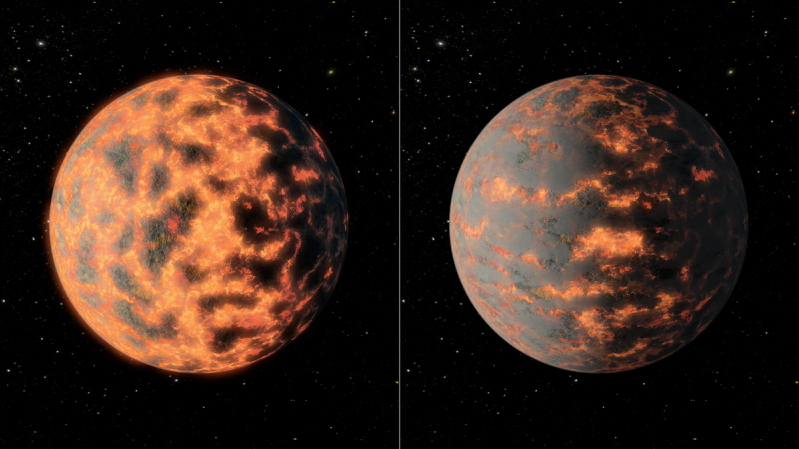
For the first time ever, the atmosphere of a "super-Earth" exoplanet, a world outside our galaxy, has been characterized in the recently released video from European Space Agency (ESA). Scientists used the most sophisticated technologies to make an accurate animation of the exoplanet.
The exoplanet 55 Cancri e, also known as Janssen, is two times wider and eight times more massive than Earth. It is located at about 40 light-years from our Solar system. 55 Cancri e may be has characteristics the same as our planet Earth, but its surface temperature is totally uninhabitable. Estimates show the super-Earth has a temperature over 3,600 degrees Fahrenheit.
Watch the "Transit of 55 Cancri e" below:
The latest animation of the exoplanet gives scientists clues about what are the features of these alien worlds and how they might have formed and evolved. "This [discovery] has important implications for 55 Cancri e and other super-Earths," said Giovanna Tinetti, co-author of the study from University College London (UCL) in the United Kingdom.
55 Cancri e is a weird world compare to our own. Earth takes 365.256 days to complete its orbit around the sun, but 55 Cancri e can complete one orbit around its host star for just 18 hours. It is therefore almost certainly too hot to support life as we know it.
Interestingly, the planet might have large deposits of diamonds. in fact, some researchers call it as "diamond planet." Observation shows that the super-Earth's interior has massive amount of carbon.
For future studies, researchers said they will investigate the presence of hydrogen cyanide and other molecules in 55 Cancri e using the next generation of telescopes. If the theory that the planet is rich in hydrogen cyanide is true, then its air is highly likely poisonous, according to co-author Jonathan Tennyson from UCL.
Astronomers have found thousands of exoplanets in the past two decades. Using NASA's Kepler space telescope and Hubble, experts found many planets that have a huge diffirences in terms of size and orbit. Some alien worlds have rocky surfaces, while some possess icy components.
According to scientists from UC Berkeley, over 22 percent of Sun-like stars have Earth-sized planets in their habitable zones. Scientists concrete on these habitable regions to look for possible life-bearing worlds.
In the next couple of decades, scientists hope to locate an intelligent alien civilization within our universe.
To know more about the latest findings about 55 Cancri e, read the latest edition of the Astrophysical Journal.







